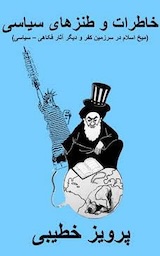Cartoon by Oliver Schopt
Iran’s nuclear messaging campaign
Alam Saleh, Zakiyeh Yazdanshenas
Middle East Institute: Iran’s missile attack on Israel on Oct. 1, 2024, marked a significant escalation in the ongoing regional tensions. This assault, reportedly involving 180 missiles, was the Islamic Republic of Iran’s largest yet against Israel, targeting military and security sites in retaliation for Israeli assassinations of leaders of Hamas and Hezbollah in Tehran and Beirut. Iranian officials framed the attack as an act of self-defense, warning that further Israeli actions could provoke even stronger retaliation from Tehran.
This barrage, along with the missile and drone attack on April 13, raises important questions about Iran’s deterrent power. While Iran demonstrated its capacity to launch large-scale missile strikes, Israel’s robust missile-defense systems, supported by American assets in theater, reduced the impact of the attack. This highlights a complex balance of deterrence: while Iran can inflict damage, Israel’s defensive and retaliatory capabilities — backed by overwhelming resources from the United States and its Western and regional allies — seem to limit Iran’s ability to shift the strategic balance decisively.
Deterrence between rationality and miscalculation
This conflict is not purely about military capacities but about who appears less deterred and more determined, where perceptions of weakness may carry significant weight. In this context, Iran’s missile capabilities are a show of force, but they do not conclusively alter the deterrence dynamics between the two countries. Both sides retain significant retaliatory capacity, including nuclear options. Game theory suggests that the actor willing to go further or behave most irrationally gains an advantage, a dynamic encapsulated in the so-called Madman Theory — where bluffing, risking escalation, or acting unpredictably are calculated tactics.
This conflict is therefore defined by a delicate balance of deterrence. In strategic terms, both Iran and Israel are engaged in a contest to determine who is less deterred by the risks of escalation. As former Israeli Prime Minister Ariel Sharon stated: deterrence is Israel’s “main weapon — the fear of us.” Evidently, Tehran is following the same logic.
Iran might use threats or actions that appear risky or irrational — such as large-scale missile attacks — as a form of strategic bluffing to pressure Israel. The uncertainty over whether Iran is bluffing or is genuinely willing to escalate makes it harder for Israel to predict Tehran’s next move, raising the stakes. Meanwhile, Israel’s responses signal that it is not easily swayed by threats, yet its leadership must also calculate the risk of overcommitting in an unpredictable situation. Both sides consequently engage in a constant balancing act between appearing rational and controlled while leaving enough uncertainty to keep the other side off balance.
Nonetheless, the imbalance between the two countries also plays a critical role in shaping their strategic postures. Israel, despite being vulnerable to missile strikes and other asymmetric threats, enjoys extensive and high-level access to military and financial support from the US, a nuclear state (the ultimate deterrence). This significantly enhances its deterrent capabilities and ensures that Israel is able to endure a long period of back-and-forth attacks. Iran’s access to military resources, by contrast, is much more limited, and the country also has to deal with various internal challenges, including economic difficulties. As a result, Iran is unlikely to wait long before acting to counter or deter the threat from Israel.
This imbalance brings us to the broader deterrence dilemma of what happens when one side cannot endure more pain in a decisive and prolonged confrontation. Cornering Iran, ultimately, would cause Tehran to perceive itself as existentially threatened. Such a perception could conceivably cause Tehran to go nuclear in an effort to reassert a balance of power wherein the risk of mutually assured destruction would prevent either side from fully committing to all-out war with the other.
Pushed to the brink: Iran’s path to nuclear deterrence
According to the International Atomic Energy Agency (IAEA), Iran, as a latent nuclear state, is capable of producing weapons-grade uranium sufficient to arm several nuclear weapons within weeks. Additionally, Iran has demonstrated that its advanced missiles can reach Israel. These developments pose a greater concern to Israel, and mere acts of sabotage or technical operations targeting Iran would be ineffective against this threat. While Israel’s recent intelligence operations, such as the pager and radio explosions in Lebanon and targeted assassinations of leadership in Tehran and Beirut, may appear impressive, they have been counterproductive, pushing Iran closer to developing a nuclear weapon.
In a 2015 speech to the US Congress, Israeli Prime Minister Benjamin Netanyahu cautioned that a diplomatic agreement would not prevent Iran from obtaining nuclear weapons. The Obama administration nonetheless proceeded with what became popularly known as the Iran nuclear deal — officially, the Joint Comprehensive Plan of Action (JCPOA). However, the Trump administration’s later withdrawal from the JCPOA in 2018, fully encouraged by Israel, led Iran to increase its uranium enrichment from 3.67% to 20%. And in response to the assassination of nuclear scientist Mohsen Fakhrizadeh in 2020, Iran increased its uranium enrichment to over 60% purity. Recent regional tensions suggest Iran is expanding its stockpile, with mounting pressure bringing it closer to achieving a nuclear weapon >>>










Comments